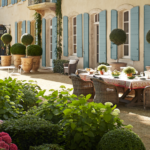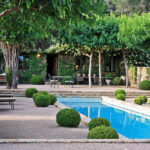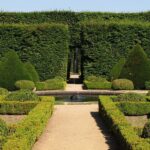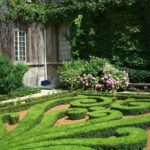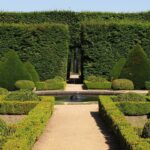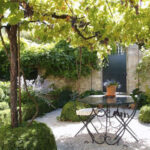French garden design is known for its elegance, symmetry, and meticulous attention to detail. Dating back to the 17th century, French garden design has influenced gardens around the world with its formal layouts and ornate features. One of the key characteristics of French garden design is the use of geometric shapes, such as squares, rectangles, and circles, to create a sense of order and harmony in the garden.
One of the most famous examples of French garden design is the Palace of Versailles, with its expansive gardens featuring perfectly manicured lawns, symmetrical flower beds, and ornate fountains. The gardens at Versailles were designed to complement the grandeur of the palace and provide a tranquil retreat for the royal family. The design principles used at Versailles, such as including water features, intricate sculptures, and carefully planned pathways, have been replicated in gardens all over the world.
In addition to formal layouts and geometric shapes, French gardens are also known for their use of topiary, or the art of shaping trees and shrubs into decorative forms. Topiary adds a whimsical and artistic element to French gardens, creating a sense of movement and rhythm in the landscape. Boxwood hedges are commonly used in French gardens for their dense foliage and ability to be pruned into intricate shapes.
Another hallmark of French garden design is the use of symmetry and balance to create a sense of order and harmony. Paths, alleys, and hedges are often arranged in straight lines or symmetrical patterns to create a visually pleasing composition. This attention to symmetry extends to the placement of plants, such as planting matching pairs of trees or shrubs on either side of a pathway or fountain.
French gardens also often feature formal parterres, or ornamental flower beds, that are designed with overlapping geometric patterns and filled with brightly colored flowers. Parterres add a sense of vibrancy and color to the garden, creating focal points and drawing the eye to specific areas of the landscape. Flowers such as roses, lilies, and tulips are commonly used in French parterres for their beauty and fragrance.
Overall, French garden design is a timeless and classical style that continues to inspire gardeners and landscapers around the world. With its emphasis on symmetry, balance, and ornate features, French gardens offer a sense of order and elegance that can transform any outdoor space into a work of art. Whether you are seeking to create a formal garden in the style of Versailles or simply add a touch of French flair to your backyard, incorporating elements of French garden design can elevate your outdoor space to new heights of beauty and sophistication.

